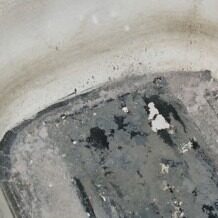We knew bathtub liners were expensive, but we didn’t realize HOW expensive they had become until today when we did an estimate. The home owner said she had priced out three options for fixing up her bathroom: Refinishing, Replacement, and Liners. Of course refinishing her tub and walls was by far the cheapest option. Replacement of her cast iron tub with a new steel tub, and replacement of the cultured marble tub surrounds came out to $4800. But the surprising number was that a tub liner and walls from a very well known franchise came out to $6500. Replacement is CHEAPER than a liner. Unbelievable but true. As for the replacement number, figure it would be about $400 more for a cast iron tub.
The main problems with liners, besides the cost, is the strong possibility of water leaking between the liner and the original tub surface, the fact that the liner material has a plastic feel to it, and the difficulty of removing liners.
HOW ARE LINERS MADE?
Liners are made by thermoforming flat sheets of PVC or acrylic into a mold. This means that the liner is not of uniform thickness, and is thinnest at the bottom of the tub, where it would actually be preferable to have thicker material. Sometimes the thickness at the bottom is less than a 1/16 of an inch thick. We’ve seen liners have have split on the bottom because they were so thin.
LINER INSTALLATION
Liners are made off site at a large factory that has molds of hundreds of different bathtubs. After the initial home visit, it will take 3-6 weeks for the liner to come into stock. Installation is actually fairly easy, and takes about the same amount of time as refinishing with minimal mess. This is probably where liner salespeople make their pitch. It is true that complete replacement of a tub can be a huge mess and take a week or more to complete.
HOW DOES WATER GET BETWEEN THE LINER AND THE ORIGINAL TUB
Sometimes liners fail soon after installation. If so, the cause was most likely improper measurement of the fixture or improper installation. Even if properly installed, over time, normal usage often causes liners to shift and sometimes stretch causing separation at the seams where the tub liner meets the walls or wall liners. This can allow water to get in and makes the liner feel squishy and if not corrected can cause the liner to split due to hydrostatic pressure. Regardless of whether the liner splits or not, the stagnant water creates mold and the worst smell you can imagine. At this point, the liner must be completely removed. Removal alone can cost $1000 or more.
REMOVAL OF A LINER COMPARED WITH REMOVAL OF AN OLD COATING
Liners are glued down to the original substrate with industrial strength adhesive. Removing them is a huge amount of work, and even once removed, restoring the original surface to the point where it can be refinished is laborious. In comparison removing an old coating from a bathtub takes at most 3 hours and isn’t nearly as messy. The picture above shows a tub after the liner has been removed, and after it has been cleaned up as much as possible.


